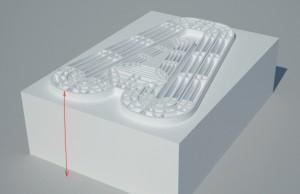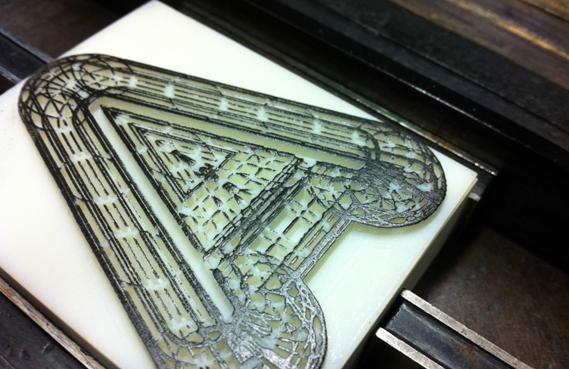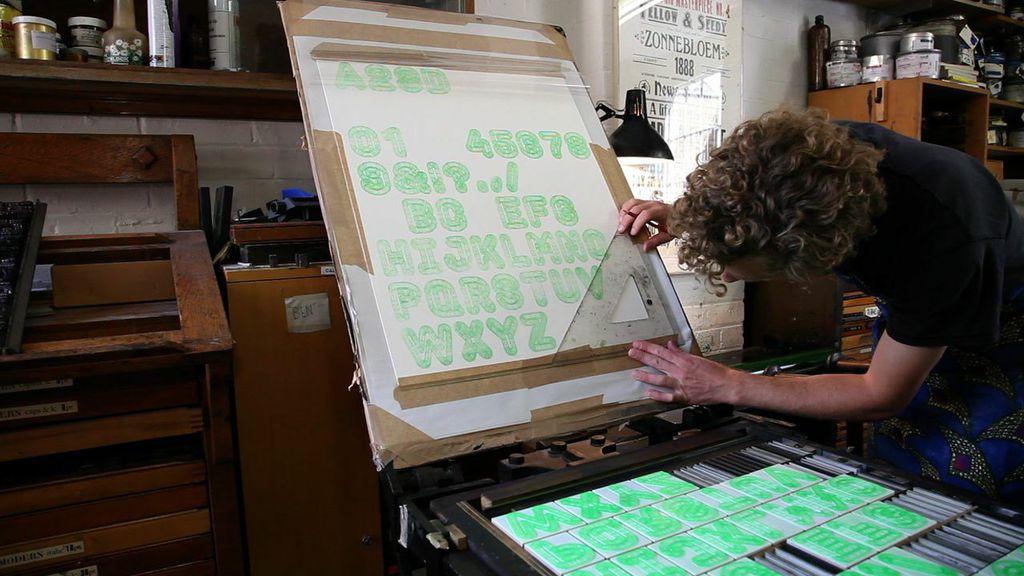 As e-readers became mainstream, bibliophiles resisted them with a reluctant nostalgia. The incomparable experience of leafing through a beloved tome, the heft of the thing, and the ink indelibly marking paper are missing from their high-tech counterparts. Mountains of printed material, not merely books, are testaments to the gravity of Gutenberg’s achievement. With the advent of offset printing, that earliest form of printing, letterpress printing became a quaint anachronism, too time-consuming, too cumbersome, too messy. As we leap further ahead, some of that regret and nostalgia infuses a project undertaken by London-based type foundry, A2-Type and New North Press print shop.
As e-readers became mainstream, bibliophiles resisted them with a reluctant nostalgia. The incomparable experience of leafing through a beloved tome, the heft of the thing, and the ink indelibly marking paper are missing from their high-tech counterparts. Mountains of printed material, not merely books, are testaments to the gravity of Gutenberg’s achievement. With the advent of offset printing, that earliest form of printing, letterpress printing became a quaint anachronism, too time-consuming, too cumbersome, too messy. As we leap further ahead, some of that regret and nostalgia infuses a project undertaken by London-based type foundry, A2-Type and New North Press print shop.
The two studios have collaborated to create a 3D-printed letterpress font, which they’ve dubbed, “A23D.“ The font, which resembles a wire-framed construction, was printed on an architectural model maker.
One of the partners at New North Press and also a graphic designer, Richard Ardagh, described the impetus behind the project: “In 2010, we held ‘Reverting to Type,’ a letterpress exhibition of all of the presses we’d heard of from around the world, and were amazed by some of the work on show, which got us thinking about the future of letterpress.” Ardagh had also had some inspiring conversations with a commercial lithographic printer whose business partner had ventured into 3D printing, not to produce text-related materials, but to create 3D, customizable dolls. Further discussion involved imagining producing “packaging with raised type” and then the two arrived at the idea to create a 3D letterpress font, recalled Ardagh, “to connect the oldest and newest forms of print technology.”
The project was funded by a grant from the Arts Council of England, which provided Ardagh and New North Press with the resources to hire A2. Henrik Kubel, along with partner, Scott Williams, began by looking at historical examples of letterpress fonts, including, explained Kubel, “eighteenth-century examples of shaded, chiseled, and chromatic fonts as well as early attempts at rendering depth and three dimensions.” One particularly invaluable source was ‘Architectural Alphabet’, a publication by Johann David Steingruber from 1773.
While paying homage to the rich history of letterpress fonts, the creative team wanted to reference contemporary printing processes. According to Kubel, the team wanted to “acknowledge the 3D printing aspect [of their yet-to-be-created font] in an appropriate and meaningful way, to see how far [they] could push the limits of [the] productive process–and also to utilize the technology in a way that has not been done with wood type before.”
After experimenting with a number of font styles, Williams and Kubel settled on the wireframe style, which combines traditional elements with a 3D appearance, something like a maker’s wire construction with a hint of the Art Deco style. One problem that arose, however, was with the finer details of A23D, which the designers knew would present problems in terms of material choices.
The design team experimented with two 3D printing methods, “selective laser sintering, [a technique which uses lasers to sinter powders such as metal to create a solid 3D object],” and “fused deposition modelling, which lays plastic down like a coil,” neither of which produced satisfactory results–the first created brittle, porous prints; the second was problematic due to temperature variability. The method of choice was a liquid photopolymer used in polyjet printing. In brief, the printer applies one layer of the photopolymer at a time. After each individual layer is applied, the printer bed drops and each layer is cured using UV light. There are approximately 400 layers to each letter block, so the process is quite time-consuming.
The actual 3D printing was done by the London firm, Chalk Studios, which specializes in printing architectural models and sculpture. While the structure of the letters was created with the liquid photopolymer, the actual backing is a material called “chemiwood,” a plastic that has the density of wood–so, a seriously contemporary material referencing the traditional one.
The end result is a complete font that is 18 line or 216 points. The set includes two of every number, an ampersand, four “A’s” and six “E’s.” The size is ideal for one of A2’s most favored processes–poster printing. The font is large and bold enough to be legible in the poster format but also offers the wire-frame details that make it especially artful. The studio offers monthly letterpress workshops and the font will be a major feature of those workshops–therefore put to very practical use.
When the complete set was finished, the design team printed 200 sets on posters using several different, bright, “fluoro” inks. On the poster, each letter and number appear and are superimposed over a single, larger letter or number, or “specimen,” as the team called it. The design team also produced a film recounting the creation of A23D. The film premiers on September 13 at the Victoria and Albert Museum as part of the London Design Festival. Let’s hear your thoughts on the merging of technology from the past with that of today, in the 3D printed letterpress forum thread on 3DPB.com.
[Source: CreativeReview]Subscribe to Our Email Newsletter
Stay up-to-date on all the latest news from the 3D printing industry and receive information and offers from third party vendors.
You May Also Like
US Army Corps of Engineers Taps Lincoln Electric & Eaton for Largest 3D Printed US Civil Works Part
The Soo Locks sit on the US-Canadian border, enabling maritime travel between Lake Superior and Lake Huron, from which ships can reach the rest of the Great Lakes. Crafts carrying...
Construction 3D Printing CEO Reflects on Being Female in Construction
Natalie Wadley, CEO of ChangeMaker3D, could hear the words of her daughter sitting next to her resounding in her head. “Mum, MUM, you’ve won!” Wadley had just won the prestigious...
Blue Laser-powered M600 3D Printer Launched by Meltio
Founded in 2019 as a joint venture between Additec and Sicnova, metal 3D printer OEM Meltio develops and manufactures high-performance and easy-to-use metal 3D printing solutions that use its patented wire-laser metal...
3D Printed Storage Tanks Cut Material Costs by 25%
In a previous article, “Concrete Dreams: Let’s Print Money, Not Houses,” we discussed how the spotlight on 3D printing homes might be misplaced. Bollards, pedestrian bridges, and concrete tanks could...































